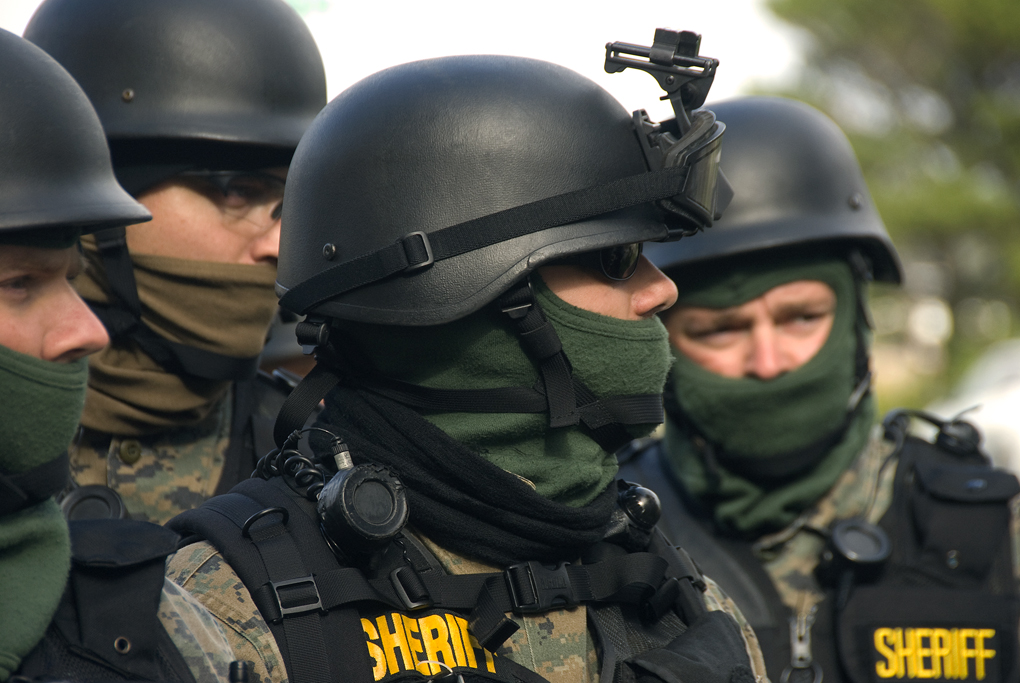By: Marco Roca
While dogs are endearingly regarded as man’s best friend and a bulldog acts as our university’s mascot, few know that humans created modern day dogs, and even fewer realize that dogs helped shape modern human civilization. Although it is a bold statement, most anthropologists agree that mankind domesticated dogs from wolves, and that those very dogs upheld their part of our symbiotic relationship by helping us hunt for more food, protecting us and our possessions more effectively, and essentially generating the foundation upon which civilized human society was established. Intuitively, one would think dogs’ role in protecting us would grow increasingly gratuitous with the passage of time; however, dogs now play a more important and diverse role in keeping us safe than ever before.
Dogs have a decorated history in warfare dating back to ancient civilizations such as the Egyptians, Greeks, Persians, and Romans. Gifted military commanders such as Attila the Hun, Frederick the Great, and Napoleon all utilized dogs for a variety of heterogeneous tasks in their legendary military campaigns. In fabled and glorious conflicts such as the Battle of Marathon, Xerxes’ invasion of Greece, and the Spanish conquest of the New World, dogs served nobly alongside humans. In World War I, some of the approximately one million dogs that died in action were officially promoted to the position of sergeant. In World War II, dogs were responsible for detonating bombs on German tanks and assisting in the Pacific Theater effort against Japan. In the Vietnam War, it is reported that dogs’ prowess in revelation was so keen, that they could sense enemy fighters hiding underwater with only reed breathing straws shrouded above the surface. Official records estimate that dogs in Vietnam saved over 10,000 American lives; therefore, dogs’ historical use in combat, communications, detection, and scouting cannot be understated.
Contemporary dogs in the military are as important now as ever, with upwards of 3,000 dogs currently protecting the U.S. interests all over the world. The resources devoted towards developing today’s dogs of war are astounding, with mammoth complexes in Georgia’s own Ft. Benning and the Lackland Air Force Base in Texas. Basic training lasts between 60 and 90 days, and there the dogs learn how to sniff out explosives, detect enemies from up to two miles away, and protect their handlers. Additional training can run upwards of $20,000, and the most consummate dogs can learn advanced techniques to specialize in certain areas of combat. If the United States’ pattern of spending on military dogs is not convincing enough, General David Petraeus recently said, “By all measures of performance, their [dogs’] yield outperforms any asset we have in our industry. Our army would be remiss if we failed to invest more in this incredibly valuable resource.” Patrick Heller, a cadet at the United States Military Academy at West Point, reacted similarly in an interview with GPR: “Everybody on base is familiar with dogs’ role in the military and how countless American war heroes have had the aid of dogs. Even Chris Kyle [the man with the most kills in American sniping history] had a dog who saved his life during combat when it discovered and mauled a terrorist none of the [Navy] SEALs even noticed.”
Just as with soldiers, only the most elite dogs are capable of joining the Navy SEALs. Cairo, the dog central to Operation Neptune Spear (the mission to kill Bin Laden in Abbottabad, Pakistan) and the only member of SEAL Team Six to have been officially recognized by name, is perhaps the flower of them all. A ferocious Belgian Malinois, Cairo is now famous enough to have met President Obama and to have been depicted in Zero Dark Thirty. Cairo’s engagements in the operation included catching those trying to escape the compound, sniffing for bombs and booby-traps, searching for false walls or hidden doors behind which Bin Laden might have been hiding, and serving as an intimidating psychological deterrent in a way weapons cannot (the Middle East has a noteworthy cultural aversion to dogs). Furthermore, Cairo and dogs like him are equipped with suits of armor costing up to $30,000 that come furnished with special protection from shrapnel and bullets, night vision, cameras for handlers to see what the dog can, speakers for handlers to command the dog, and an “intruder communications system” that enables dogs to see through concrete walls. All of this technology, combined with a dog’s natural advantages — including a sense of smell 40 times more powerful than that of a human, a running speed over 2 times as fast as our own, and a trained fearlessness — make the elite dogs of war close to indomitable.
Today’s military dogs may be able to parachute, swim, follow complex orders, and do everything in between, but what does the future have in store for the world’s pooches of conflict? All signs point to increased development of technology and training to fully harness their physical gifts, but is any of this moral? Should the conflicts of men only be resolved by men? Should we, like PETA and other animals rights advocacy groups, cringe at the thought of dogs dying in action and sometimes suffering post-traumatic stress disorder? As sensitive as these questions are, we are all obligated to salute the canines that fight for us and our freedom every single day.

